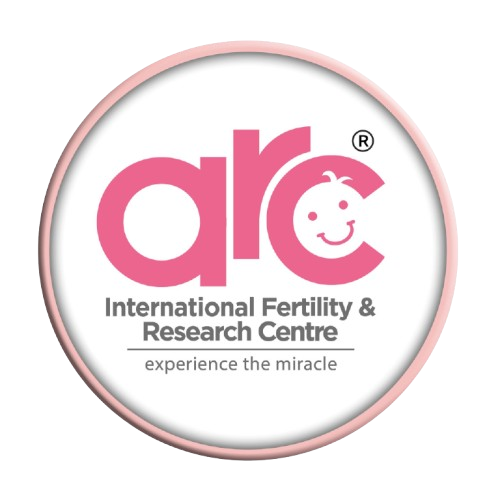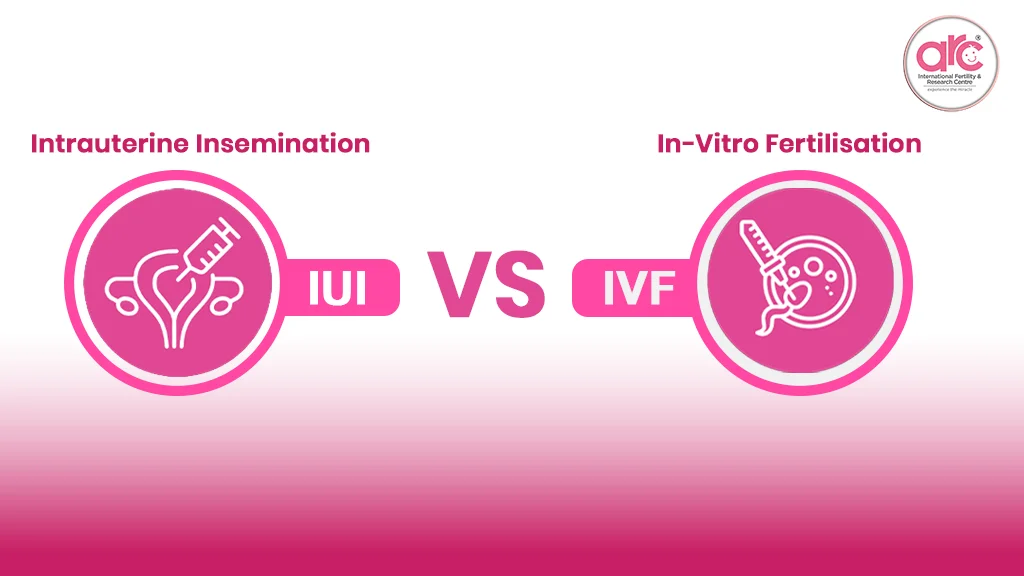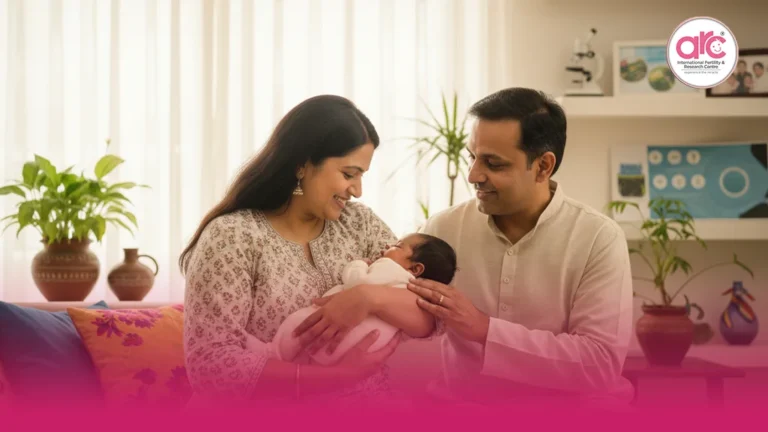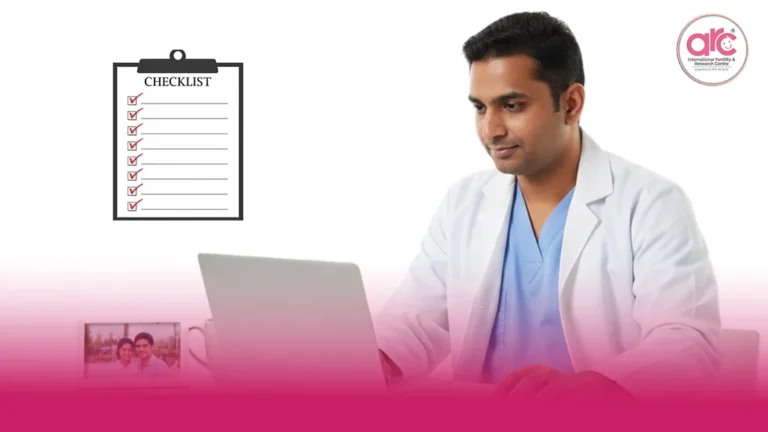You don’t forget the silence after another negative test. The quiet between hope and hesitation, when you start to wonder if you should change your path. That’s when most couples walk into a fertility clinic asking one question that carries all their dreams inside it — “Should we try IUI or move to IVF?”
The truth is, both treatments can lead to a healthy pregnancy. But their success rates, timelines, and emotional journeys are different.
In this blog we will tell you what is what, when to choose which, success rate and more.
IVF vs IUI: Which Has a Higher Success Rate?
If you’re looking for direct answers, here it is:
In Vitro Fertilization (IVF) has a much higher success rate per cycle than Intrauterine Insemination (IUI).
| Procedure | Average Live Birth Rate (Per Cycle) | When It’s Usually Recommended |
|---|---|---|
| IUI | 5–20% (depends on age and medication) | For mild or unexplained infertility, especially when the woman is under 35. |
| IVF | 40–60% (for women under 35) | For severe infertility, blocked tubes, advanced age, or after failed IUI cycles. |
IVF succeeds because it does what nature sometimes can’t — it bypasses obstacles, selects the healthiest embryos, and creates life under precision and care.
Understanding IUI Success Rates
IUI is often the first step — less invasive, simpler, and more affordable. In this procedure, healthy sperm is placed directly into the uterus during ovulation.
But its success is deeply tied to age and specific fertility factors.
IUI Success by Age
- Under 35: 15–20% per cycle
- 35–37: 10–12%
- 38–40: 7–10%
- Over 40: 3–9%
The younger the eggs, the better the odds. That’s the simple, biological truth.
When IUI Works Best
IUI shines in mild cases — when the sperm count is slightly low, ovulation needs a little boost, or there’s no clear reason for infertility at all. It’s typically tried for 3–4 cycles before doctors suggest moving on.
The “Three-Cycle Rule”
After 3–4 well-timed IUI attempts, if pregnancy hasn’t happened, success rates drop sharply. At this stage, moving to IVF saves both time and emotional energy.
IVF: A More Controlled Path to Success
IVF is more than a procedure — it’s a science of possibilities. Eggs are retrieved, fertilized in a lab, and only the healthiest embryo is placed back into the uterus.
That control is what makes IVF’s success rates so much higher.
Visit here to learn more about IVF treatment process step by step
IVF Live Birth Rates by Age (Per Egg Retrieval)
| Age | Live Birth Rate (1 Cycle) | Cumulative After 3 Cycles |
|---|---|---|
| Under 35 | 50–60% | Over 70% |
| 35–37 | 40–45% | 65–70% |
| 38–40 | 25–30% | 50–60% |
| Over 40 | Below 15% | 30–40% |
At ARC Fertility Hospitals, we maintain a cumulative IVF success rate of 85% over two embryo transfers — a reflection of technology, experience, and personalized care.
Why IVF Works When IUI Can’t
IVF is designed for tougher fertility barriers:
- Blocked Fallopian Tubes: Eggs are retrieved directly from the ovaries.
- Severe Male Factor Infertility: ICSI (Intracytoplasmic Sperm Injection) allows fertilization with even a single healthy sperm.
- Advanced Maternal Age: Multiple eggs can be collected and the best embryos chosen.
- Genetic Concerns: Embryos can be screened before transfer (PGT) to reduce miscarriage risk.
Each of these steps adds precision to the process — and peace of mind for couples who’ve already been through a lot.
IUI vs IVF: Quick Comparison
| Feature | IUI | IVF |
|---|---|---|
| How it Works | Sperm placed into uterus | Egg fertilized in lab, embryo transferred |
| Invasiveness | Minimal | Moderate (Egg retrieval under sedation) |
| Cost (Per Cycle) | ₹10,000–₹15,000 | ₹69,000–₹1,00,000+ |
| Time Required | ~15 days | 4–6 weeks |
| Fertilization Control | Natural | Fully controlled in lab (ICSI available) |
| Ideal For | Mild or unexplained infertility | Blocked tubes, severe male factor, age-related infertility |
When to Choose Which
Fertility is deeply personal — and so is the path forward. But here’s how most specialists guide couples:
When IUI Makes Sense
- Mild or unexplained infertility
- Female partner under 35
- Trying to conceive for less than a year
- Financial constraints
When IVF is the Smarter Next Step
- Age 38 or above
- Blocked or damaged tubes
- Severe male factor infertility
- Moderate to severe endometriosis
- After 3–4 unsuccessful IUIs
The ARC Perspective: Science With Soul
Every number tells a story, but so does every couple. At ARC Fertility Hospitals, treatment isn’t just about success rates — it’s about trust, timing, and emotional care that matches the medical precision.
Whether it’s IUI or IVF, the goal is the same: a healthy baby, and a journey that feels supported every step of the way.
Final Word
There’s no “one right treatment” — only the one that’s right for you. If IUI feels like hope’s gentle start, IVF is science’s strong hand leading you forward.
Whichever you choose, choose it with information, confidence, and care. Because when it comes to creating life, clarity is the first form of courage.




